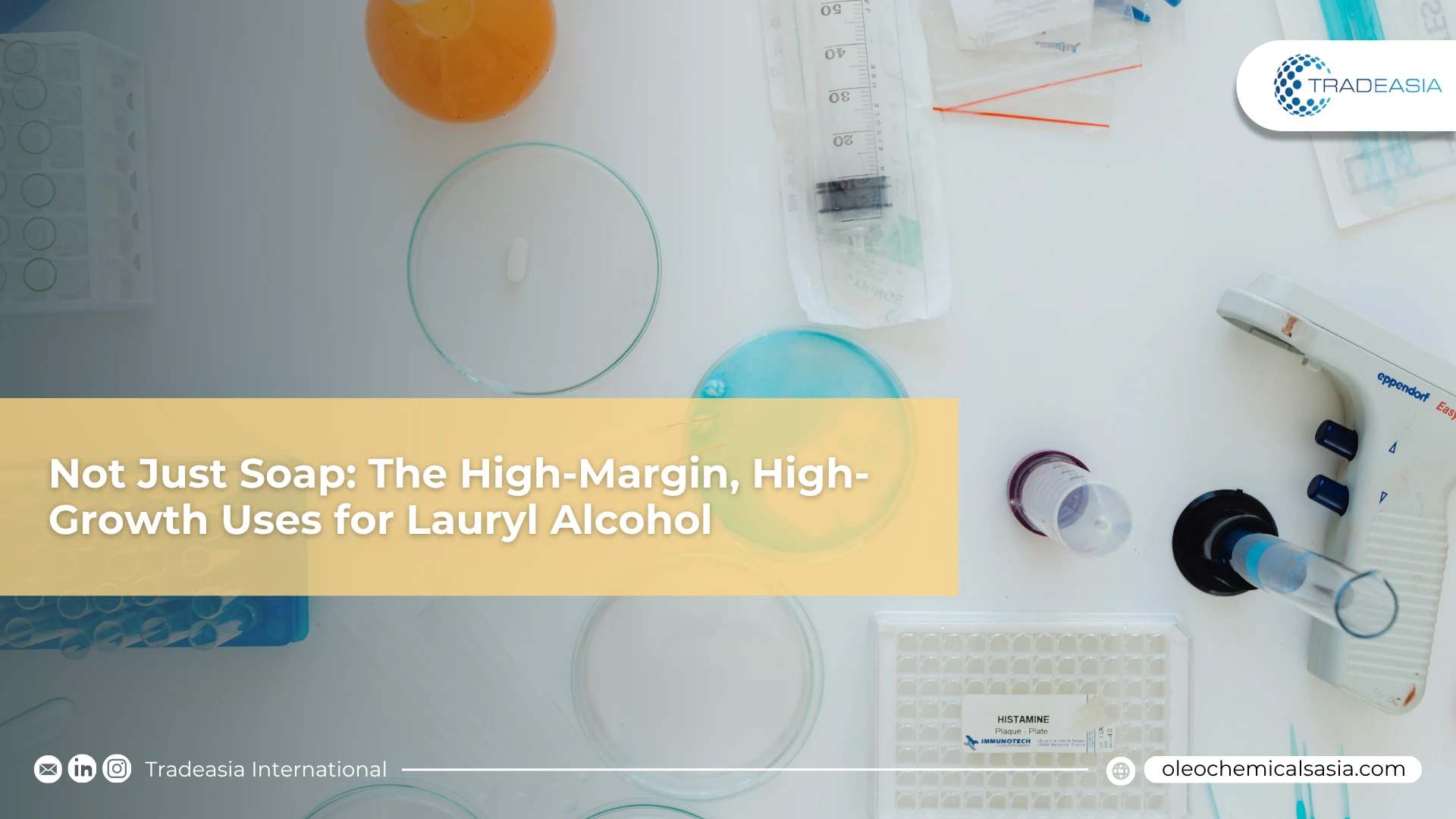Not Just Soap: The High-Margin, High-Growth Uses for Lauryl Alcohol

Table of Content
-
The Rise of Bio-Lubricants and "Clean Beauty"
-
The "Sulfate-Free" Paradox and Industrial Value
While the surfactant market consumes nearly 70% of all Lauryl Alcohol, the most strategic growth is happening in the other 30%. This is where Lauryl Alcohol shifts from a high-volume commodity to a high-value specialty ingredient. These technical applications, which demand higher purity and functionality, are part of a derivative market projected to grow at a 5.8% CAGR, significantly outpacing the mature HPC sector.
Capturing this value requires a partner who sees beyond the standard commodity. At Tradeasia International, our oleochemical expertise isn't just about volume; it's about identifying these high-growth applications for our partners. We connect them to the specific, high-purity Lauryl Alcohol grades from our global palm network required for these demanding applications.
The Rise of Bio-Lubricants and "Clean Beauty"
A primary growth engine is the bio-lubricants market, which is forecast to exceed $4.0 billion by 2030. Lauryl Alcohol is esterified to create laurate esters, which are used as high-performance, biodegradable lubricants that can replace traditional mineral oils. This "green" functionality is also driving demand in cosmetics, where C12-derived emollients are replacing silicones in "clean beauty" formulations, prized for their light, non-greasy skin feel.
This technical demand requires a different class of product-often a 99.5% purity Lauryl Alcohol. Sourcing this specific "cut" of alcohol from a refinery is a specialized skill, demanding deep relationships with producers who can fractionate to these exact specifications, a core strength in managing a diverse palm-based portfolio.
The "Sulfate-Free" Paradox and Industrial Value
Ironically, the "sulfate-free" trend, which is growing at a ~7.2% CAGR, is also fueling demand for Lauryl Alcohol. While consumers are moving away from SLS, they are moving toward milder, Lauryl Alcohol-derived alternatives. Lauryl Alcohol is the essential precursor for the fatty alcohol ethoxylates (FAE) and amphoteric surfactants that form the base of these gentle, premium formulations. Finally, a significant 5-8% of Lauryl Alcohol is used in demanding industrial applications, acting as a key emulsifier in agrochemicals and as a flotation agent in mining. For savvy traders, the volume is in soap, but the future value is in this technical portfolio.
Sources:
-
Palm-Chemicals.com: Fatty Alcohol Derivatives & Specifications
-
Fact.MR: Bio-Lubricants Market Analysis & Growth Report
-
Cosmetics & Toiletries: "Sulfate-Free" Surfactant Market Trends

Leave a Comment